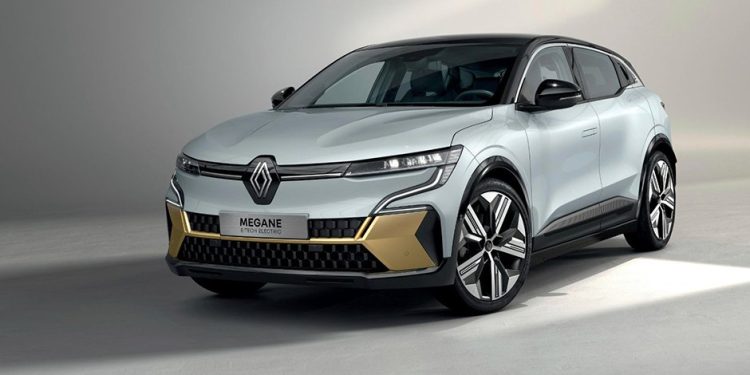Renault reveals Megane E-Tech electric crossover
French carmaker Renault has whipped the covers off its new Megane E-Tech, the production version of its much teased Megane eVision Concept from late last year.
We noted at the time that the eVision looked more or less production ready, with its friendly proportions and looks that didn’t seem out of place relative to Renault’s existing line-up. And true to form, very little has been changed for the production-destined E-Tech’s design.

The E-Tech is the first Renault to be built on the brand’s new CMF-EV platform, making it a sibling of sorts to the Nissan Ariya. This platform is set to become commonplace on a raft of future Renault, Nissan, and Mitsubishi electric product.
It measures in at 4210mm long, 1780mm wide, 1500mm tall, with 2700mm sitting between its axles and a 440-litre boot. Its dimensions combined with Renault’s claims that all of its future EVs will get much cheaper thanks to new battery innovations and a greater number of shared components should mean the Megane E-Tech will sell like hotcakes. In Europe, at least.

Two powertrain options have been revealed so far. Both make use of the same single-motor format, but with different power outputs. The base model gets a 96kW/250Nm unit, while the more powerful model gets 160kW/300Nm.
The latter will be capable of accelerating to 100km/h in 7.4 seconds on its way to a limited top speed of 160km/h, according to Renault. Not exactly ludicrous performance, but more than enough for most commuters.

Paired to the powertrain is an NMC lithium-ion battery tipping the scales at just 395kg, and available as either a 40kWh unit or a 60kWh unit. The former is good for a 299km range, and the latter a 470km range, according to the WLTP cycle.
Inside, occupants get a 12-inch portrait-orientated infotainment screen to play with, while the driver’s information is laid out on a 12.3-inch digital cluster. The two screens are built into the same unit, which wraps around the back of the steering wheel.

The cabin layout is a rather futuristic one, with shades of wood, metal, and faux leather upholstery. A 410kW Harman Kardon sound system is available, and cars can be optioned with up to 26 different active safety systems, including automatic parking and level 2 autonomy.
Renault appears to be really stepping up their cabin game, perhaps in the hopes of challenging their fellow French rivals Peugeot. It’s set to launch in Europe in early 2022, with the rest of the world (including New Zealand, most likely) to follow.





